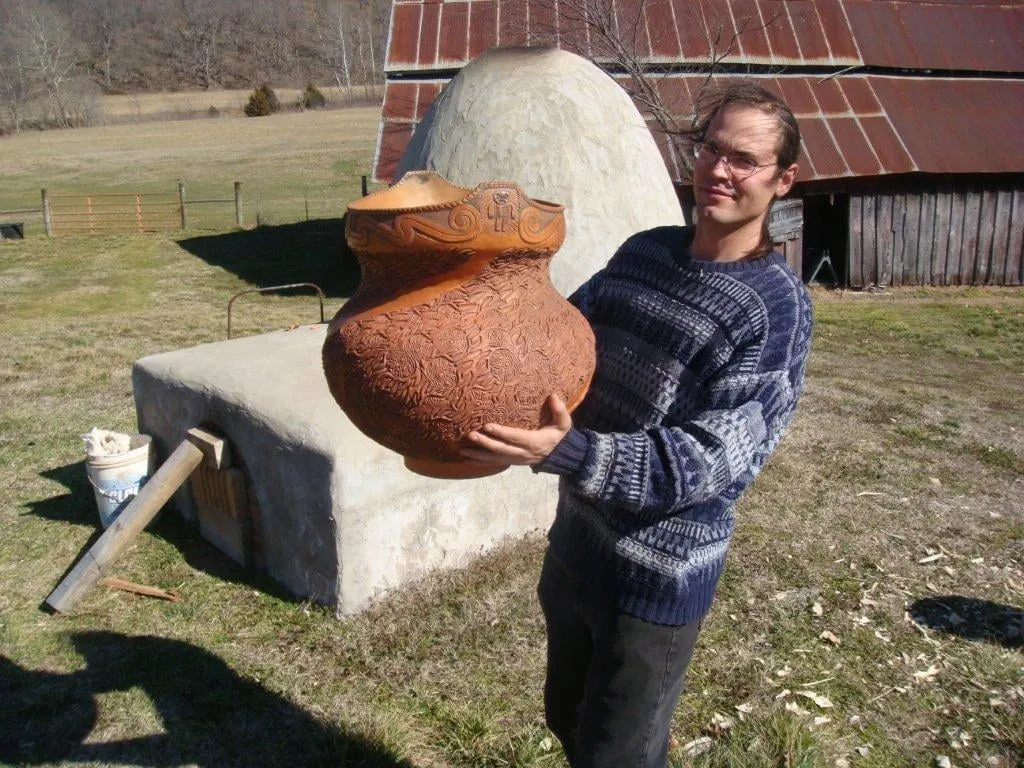
JAMIE ZANE SMITH
a tribal descendant of the Wyandot Nation of Kansas, looks to his Native American roots for artistic inspiration. He is a nephew of renowned potter, Richard Zane Smith, who taught him his delicate style of coil-building. After receiving a Bachelors of Fine Arts from Western New Mexico University in 2008, Jamie moved his family to Wyandotte, Oklahoma to apprentice with his Uncle, who has always been Jamie’s childhood hero. Within a year Jamie was creating ceramic vessel forms utilizing hand building techniques passed down for generations in ancient times. Also passed down was knowledge about harvesting local clay and paint. These indigenous methods are unique and demanding. Jamie enjoys the process and feels connected to the land from which he harvests and wishes that his art can speak for the land and traditions.Jamie uses wooden hand-carved stamps impressed in the clay creating patterns inspired by nature that catch the eye. Some of the fine art creates an optical illusion for the viewer, or as he describes, "a cosmological interpretation of a view of reality and how we perceive the world around us.” Jamie has been featured in Native People's Magazine as one of Four Emerging potters to watch and his work is in the collection of numerous museums across the country.
The Wyandotte, or Wyandot Nation was originally located near Georgian Bay in Ontario, Canada. Their name comes from the word ‘Wendat,’ which translates to "dwellings on the Peninsula," and they have also been called ‘Huron.’ A Iroquian-speaking peoples, the Wyandotte Nation is headquartered in Oklahoma with approximately 5,000 enrolled members. Traditional Wyandot art forms included clay pots, weaving, and beadwork. Like other eastern tribes, the Wyandots also crafted wampum out of white and purple shell beads. Constructed using the indigenous coil method, contemporary Wyandot pottery such as Jamie's will often display traditional pottery shapes of the Huron and Wyandot peoples. Scalloped rims, heavy collars, shouldered necks, and rounded bases are characteristic of Northern Iroquoian ceramics from the Late Woodland through the Historic Period. The original vessels were used for everyday cooking and storage, as well as ceremonial purposes.
